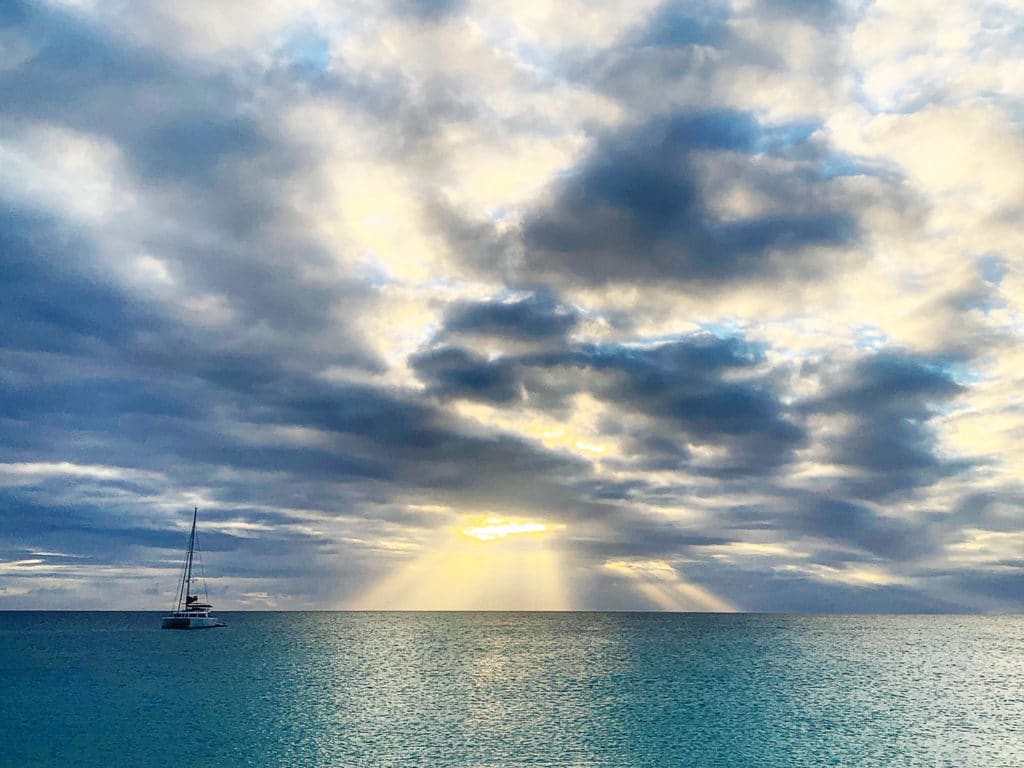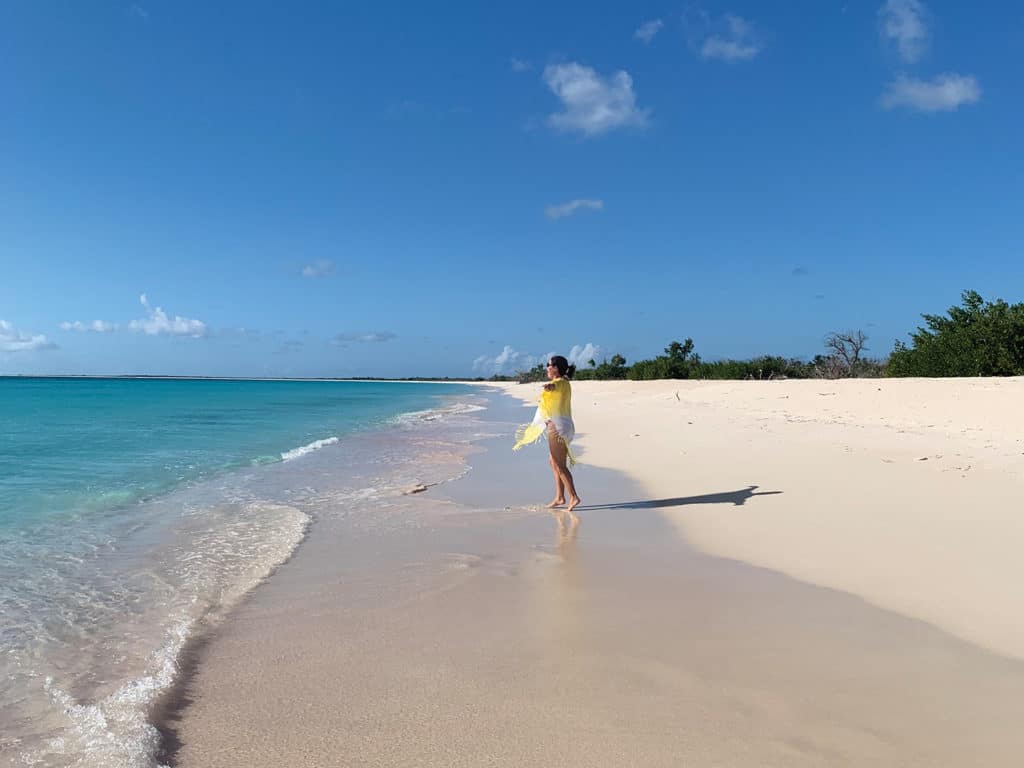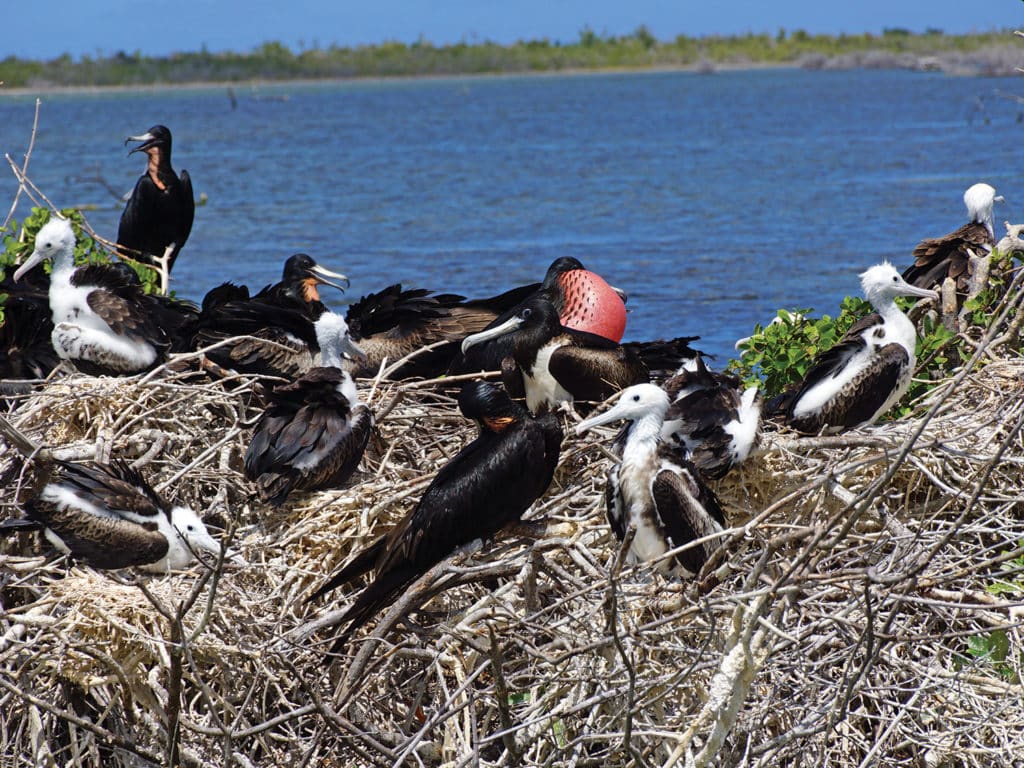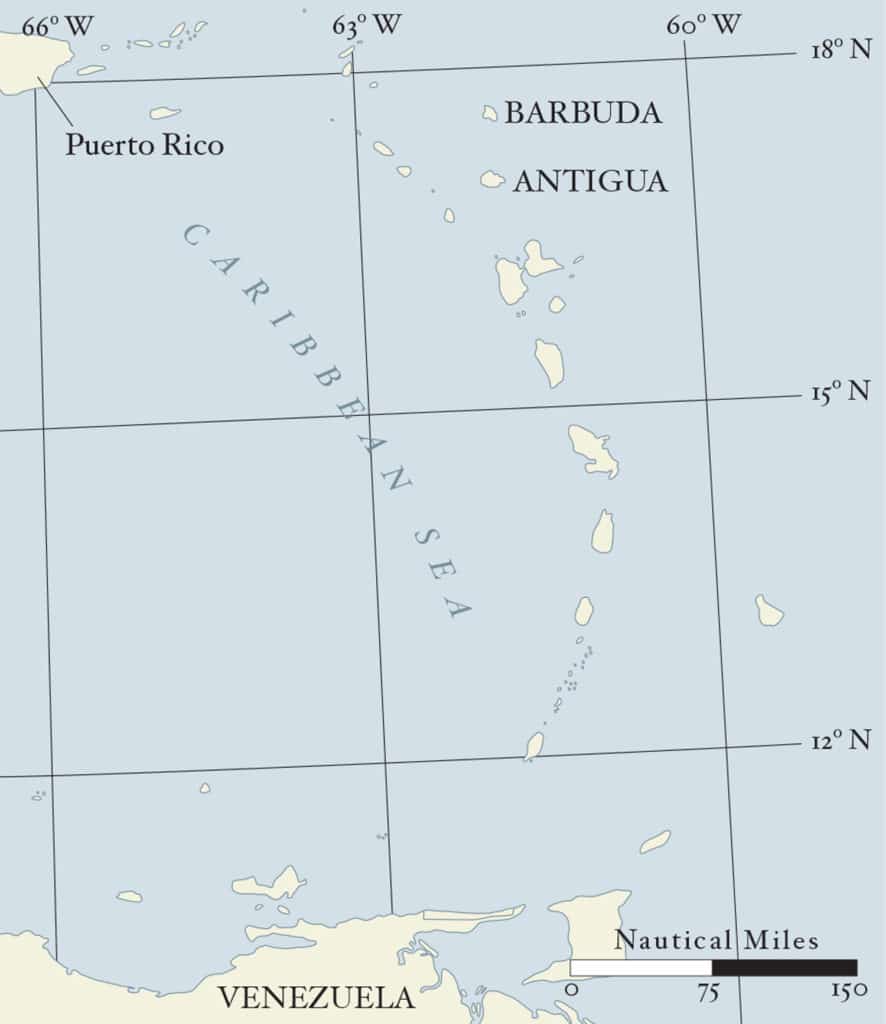
Cruising the Caribbean as an Australian is somewhat of a novelty because it’s not a region that Aussies typically visit. Flights to the Caribbean are arduously long, and prices are eye-wateringly expensive. However, Grenada is where our new-to-us Moody 47, Roam, was located, so that was where we commenced our journey. Before our family (myself, Dave, my husband, and our three boys) set off from Adelaide and flew to the other side of the world, I had never even heard of most of the countries we have now visited. It wasn’t until we arrived in Grenada and started speaking to cruisers and hearing of their plans that I became familiar with islands such as Bequia, Guadeloupe and Saba. Slowly, as we inched our way north, the once-unusual names became familiar, and each new island became home for the days, weeks or months that we graced their shores. Now, having lived on our sailboat for more than 15 months, the Caribbean lifestyle is no longer foreign.
Of all the places we have visited, to me, the island of Barbuda has felt like the most far-flung and unspoiled. Located 30 nautical miles north of Antigua, Barbuda forms part of the nation of Antigua and Barbuda, and the 15-mile-long island is unlike any I had visited. It’s famous for its pink beaches and shallow turquoise waters, and when approaching the island from the sea, the land is so flat that the only clue telling you it’s there is the turquoise shallows reflecting on the clouds like a mirage. A close look at the charts, in conjunction with Chris Doyle’s Guide to the Leeward Islands, helped us to safely make a nerve-wracking entry and drop our hook about 100 yards from the stunning 11-mile beach that Barbuda is famous for.
A visit to Barbuda is all about nature, and beauty abounds on this incredible island. Come with your boat provisioned and your tanks full.
Barbuda was all but decimated by Hurricane Irma in 2017, leaving 1,800 people to rebuild their homes and livelihoods. Yet the Barbudan people are nothing if not resilient, and today, nearly two years later, the island has rebuilt well enough, and the hurricane is now a bad memory many locals have tried to suppress. George Jeffery, the owner of Garden of Eden Tours, spoke of the horror that was Irma: “I was in my home during the hurricane; I had nowhere else to go. The sound outside was like nothing I’d ever heard before. It sounded like a thousand wild animals clawing at my door. My roof was torn from above my head while I sat and waited, praying I too wouldn’t be ripped from the corner in which I crouched.” Jeffery, who has lived in Barbuda his whole life, had never known a tropical storm as ferocious as Irma.
He spoke of his childhood, in which he was allowed to roam free over the island and swim across the mile-wide lagoon to explore the pink sandy beaches and witness nature at its finest. His love for the island was evident—it showed in his eyes. He is a man who is so in touch with the landscape, so familiar with his island’s every cove and creek, and so passionate about his pristine piece of paradise, I knew I’d chosen the right guide for my tour.

George and I climbed aboard his skiff and traveled to the Frigate Bird Sanctuary, which is a refuge for the island’s national bird. The brackish water of the lagoon was a stark contrast to the Caribbean Sea, divided by no more than 100 yards of pristine white sand, sprinkled with millions of pieces of tiny pink shells. Jeffery’s 60 hp Yamaha skimmed his boat effortlessly over the water, and I enjoyed the cool breeze on my face. Even though there were many shallow areas all over the lagoon, Jeffery didn’t require a chart or iPad to navigate the waters; he knew this place like the back of his wrinkled hand.
With 20,000 birds making the clumps of mangrove bushes their home, Barbuda’s Frigate Bird Sanctuary holds the most significant colony in the world. Jeffery took pride in the fact that even the Galapagos Islands couldn’t compete with what Barbuda has to offer. The ride to the breeding grounds took no more than 10 minutes from the town, and along the way, Jeffery made a stop to show us a full-size shipping container, lying upended in the mangroves. It had flown 3 miles through the air during Irma and had thankfully landed away from the town. The sight was staggering; the force of Mother Nature was astounding to see, yet, like the local population, the mangroves simply kept on growing and surviving as they have always done.

As we approached the birds, their large black bodies, with wingspans up to 7 feet, could be seen soaring overhead. The water was shallow, and the birds were nestled in low trees. We were able to motor within feet of them, their beady eyes inquisitive yet unperturbed by our presence. Male and female, young and old, they sat quietly together, the gentle breeze rustling their feathers. The males were spectacles, with giant red throat pouches, apparently used to attract the females. The noise of their clicking beaks could be heard all around, and the smell was pungent and offensive. However, the unbelievable experience was the sort you would have but once in a lifetime.
Upon returning to the one and only settlement on the island, we paid a visit to what was left of the village of Codrington. Sadly, piles of rubble lined the streets, and tents were erected around different parts of the town. Despite the devastation and destruction, the locals were warm and welcoming, and I found the donkeys and deer that wandered freely to be endearing. A visit to Barbuda is all about nature, and beauty abounds on this incredible island. However, don’t expect hotels, restaurants or infrastructure. Come with your boat provisioned and your tanks full, and stay until you can no longer be self-sufficient.

There is talk that some ambitious investors want to bring Barbuda into the 21st century, an idea strongly opposed by many Barbudans. Yet, with anything untouched and unspoiled in this world, it is only a matter of time before that changes. With perhaps some of the most prime real estate in the world, a visit to this small part of our planet is something you should do sooner rather than later. The pink sand and turquoise water will leave you with a feeling of awe upon arrival, something akin to loss and longing when you pull anchor, raise your sails and float away.
Erin Carey and her family are currently cruising the Caribbean. Follow along with their adventures on their website.








